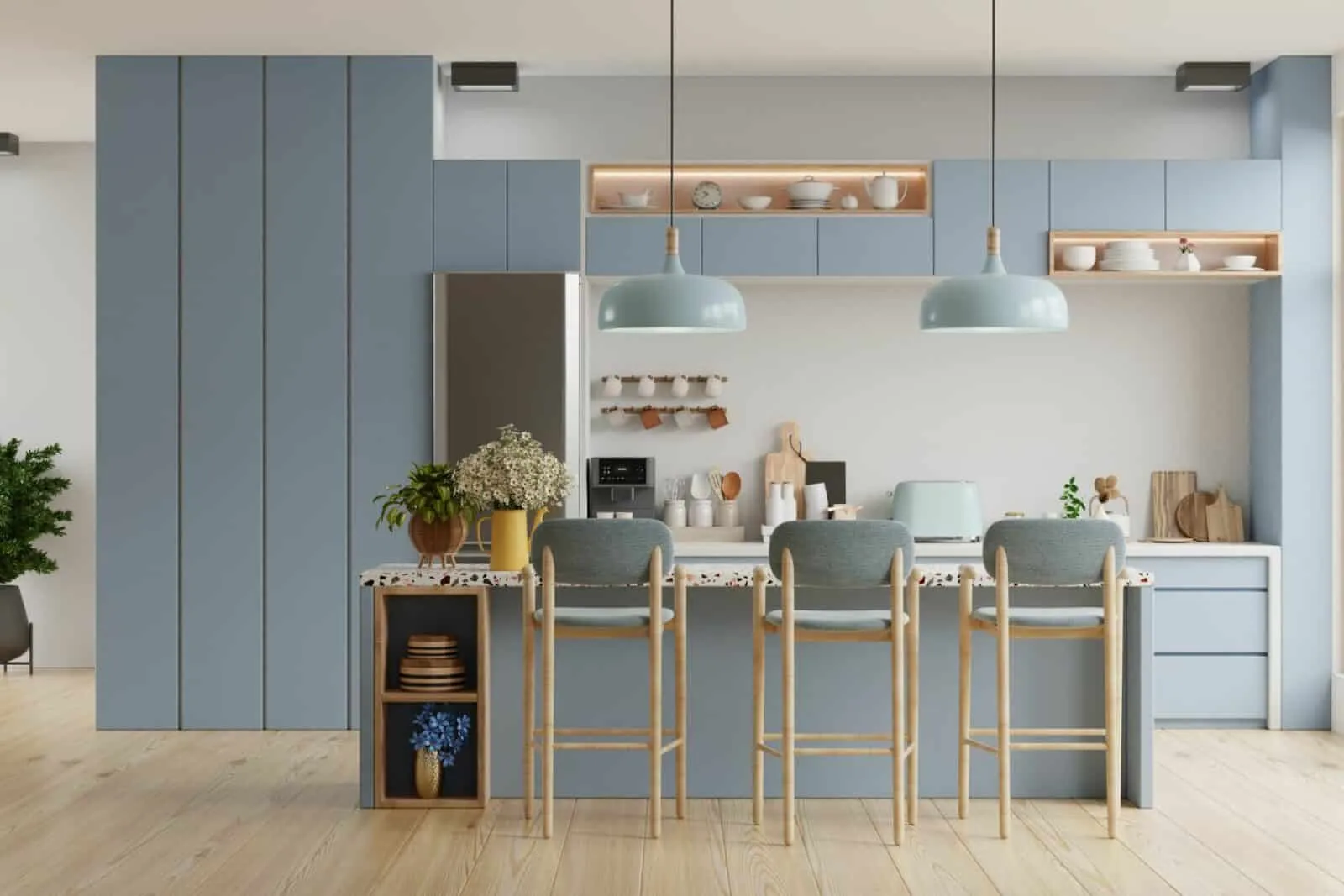Choosing Your Kitchen Decor Style
The initial step in designing your kitchen decor involves identifying your preferred style. This crucial decision shapes every subsequent choice, from cabinetry and countertops to the smallest decorative accents. Consider exploring various design aesthetics, such as modern, farmhouse, coastal, or traditional, to pinpoint the one that resonates with your personal taste and complements the overall feel of your home. Websites like Pinterest and Houzz offer extensive visual inspiration, allowing you to browse countless kitchen designs and save those that catch your eye. Understanding your style preference is the cornerstone of creating a cohesive and visually appealing kitchen space.
Modern Kitchen Design
Modern kitchen design often embraces sleek lines, minimalist aesthetics, and a focus on functionality. Characterized by flat-panel cabinetry, often in high-gloss finishes, and a neutral color palette with bold accents, modern kitchens exude a sense of sophistication. Stainless steel appliances, quartz or granite countertops, and integrated lighting further enhance the contemporary appeal. Open shelving can be incorporated to showcase curated decor items, but the overall emphasis remains on uncluttered surfaces and efficient use of space. This style is ideal for those seeking a clean, streamlined look.
Coastal Kitchen Design
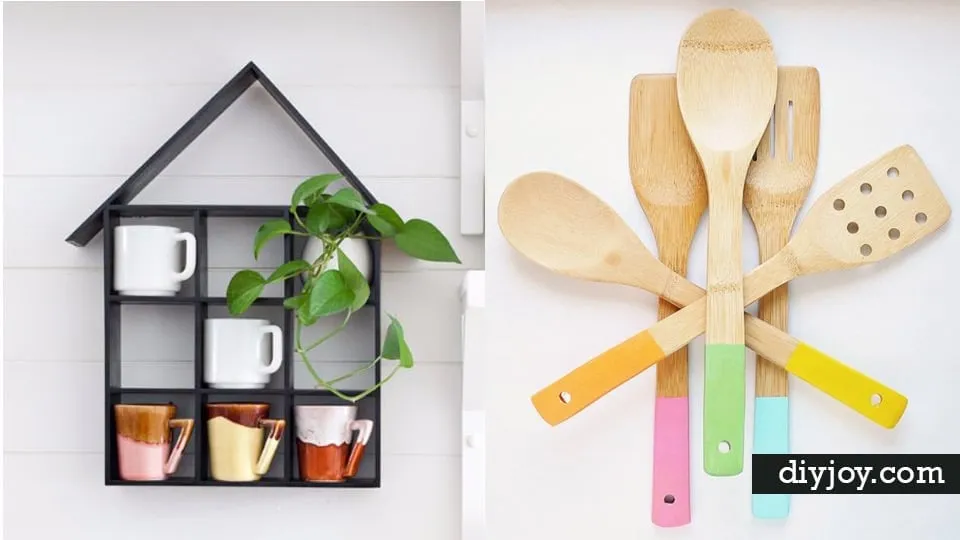
Coastal kitchen design evokes a sense of relaxation and tranquility, drawing inspiration from the seaside. Typically featuring light and airy color palettes, such as whites, blues, and sandy tones, coastal kitchens often incorporate natural materials like wood and woven textures. Shaker-style cabinetry, open shelving for displaying nautical-themed decor, and countertops made of materials like butcher block or light-colored stone create a breezy atmosphere. Accessories such as seashells, starfish, and blue-and-white striped accents further enhance the coastal theme, making it a perfect choice for those who love the ocean.
Farmhouse Kitchen Design
Farmhouse kitchen design celebrates rustic charm and a sense of warmth and comfort. Characterized by elements like apron-front sinks, Shaker-style cabinets (often painted in white or cream), and exposed wooden beams, farmhouse kitchens exude a welcoming feel. Natural materials, such as wood countertops or butcher blocks, and vintage-inspired lighting fixtures add to the aesthetic. Decorate with open shelving to display your favorite dishware, mason jars, and other rustic accents. This style is perfect if you want to create a cozy, inviting heart of your home.
Planning Your Kitchen Layout
Once you’ve decided on a style, you must plan your kitchen’s layout. Proper planning ensures efficient workflow, comfortable movement, and the optimal use of available space. Consider the size and shape of your kitchen, the placement of windows and doors, and the location of existing plumbing and electrical connections. This stage involves mapping out the arrangement of essential elements like the sink, stove, refrigerator, and countertops. A well-planned layout not only enhances functionality but also significantly impacts the overall aesthetics and usability of your kitchen.
Maximizing Space
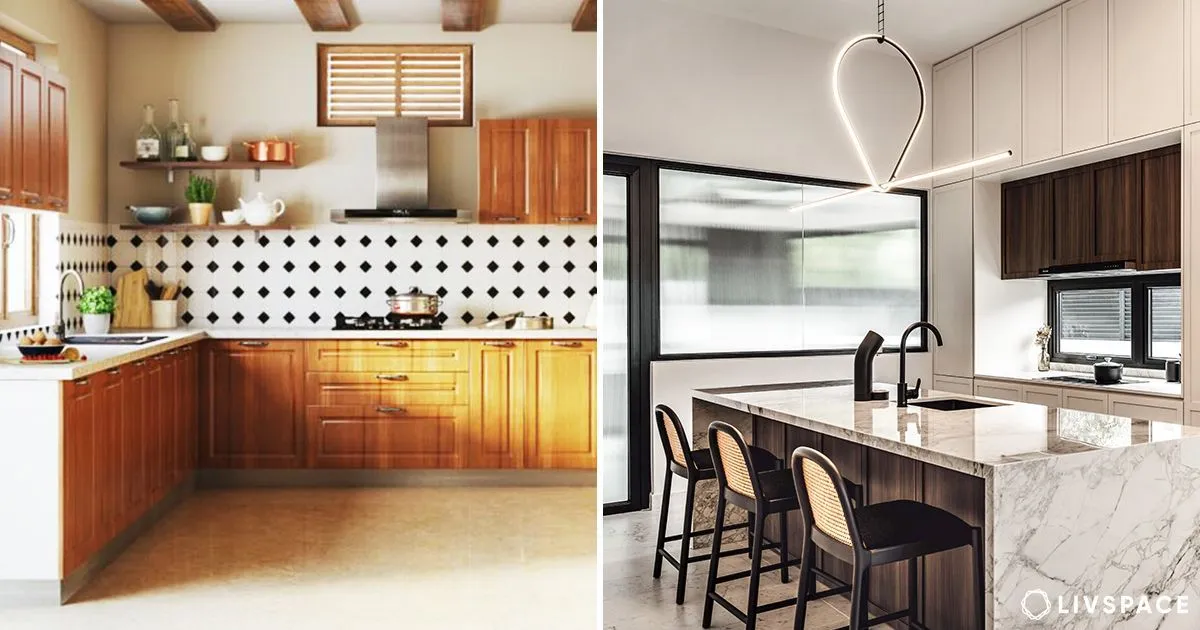
Regardless of your kitchen’s size, maximizing space is essential. Utilize vertical space by installing cabinets that reach the ceiling, providing ample storage for items you don’t frequently use. Incorporate pull-out shelves, corner cabinet organizers, and drawers with dividers to maximize storage efficiency. Consider a kitchen island for extra counter space, storage, and a casual dining area, if space permits. Choosing multifunctional appliances and sleek designs can also contribute to an open and uncluttered feel, making even the smallest kitchen feel spacious.
Kitchen Triangle
The kitchen triangle is a fundamental design principle that optimizes the workflow. It connects the three primary work areas: the sink, the stove, and the refrigerator. The goal is to position these three elements in a triangular configuration, minimizing the distance between them. Ensure that the paths between these points are unobstructed to reduce traffic and enhance efficiency. Avoid placing the sink directly across from the stove and ensure that there is sufficient counter space near each work zone to prevent crowding and make the cooking experience more enjoyable.
Selecting Colors and Materials
Color and material selections significantly impact the overall look and feel of your kitchen. Choose colors that align with your chosen style and personal preferences. Consider the amount of natural light your kitchen receives, as this will influence how colors appear. Select durable and practical materials for countertops, cabinets, and flooring, ensuring they can withstand daily use and complement the overall design. Exploring different textures and finishes will further enhance the visual interest and character of the space.
Color Psychology in Kitchens
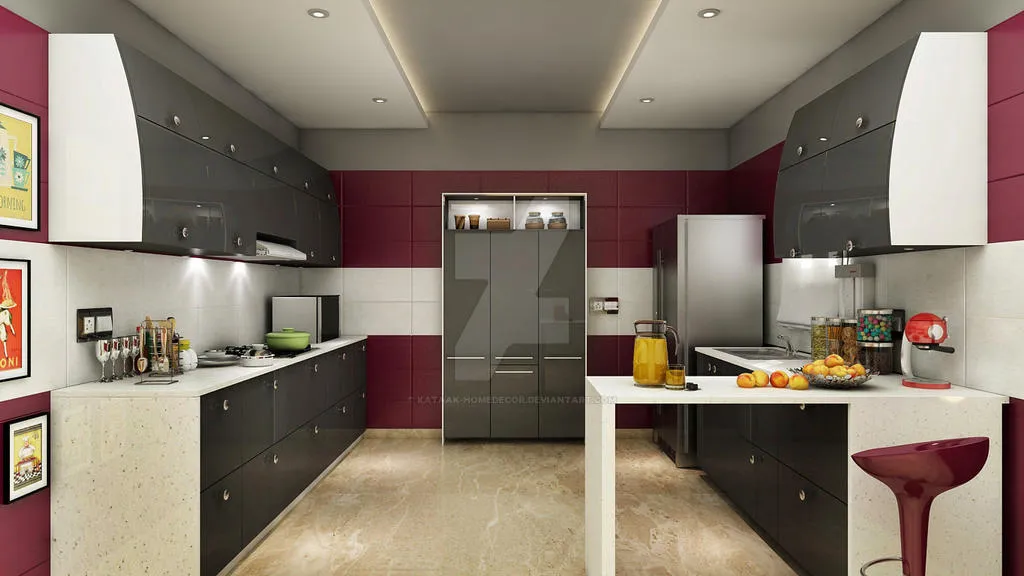
Color psychology plays a significant role in kitchen design, influencing mood and perception. Lighter colors like white, cream, and light gray can make the kitchen feel more spacious and airy, while reflecting light to brighten the space. Warm colors like yellows and oranges can create a welcoming and energetic atmosphere, suitable for social gatherings. Cooler colors like blues and greens can promote a sense of calmness and tranquility. Consider the emotional impact of different colors and how they align with your lifestyle and desired kitchen ambiance before making your final selections.
Material Selection Guide
The materials you choose determine the kitchen’s durability, aesthetics, and maintenance requirements. For countertops, consider options such as quartz (durable, low-maintenance), granite (natural beauty, needs sealing), or solid surface (seamless, versatile). Cabinets can be made from wood (classic, customizable), MDF (cost-effective, paintable), or laminate (durable, various finishes). Flooring options include tile (durable, water-resistant), hardwood (warm, stylish), or vinyl (affordable, low-maintenance). Consider your budget, lifestyle, and desired style when making material choices. Research the pros and cons of each material to make informed decisions that create the perfect kitchen.
Adding Accessories and Finishing Touches
Accessories and finishing touches add personality and complete the kitchen design. From lighting fixtures and cabinet hardware to decorative elements, these details bring your vision to life. Thoughtfully selected accessories enhance the functionality and visual appeal, creating a cohesive and personalized space. Remember that these elements provide an opportunity to add color, texture, and style, reflecting your unique personality and making your kitchen truly your own.
Lighting Fixtures
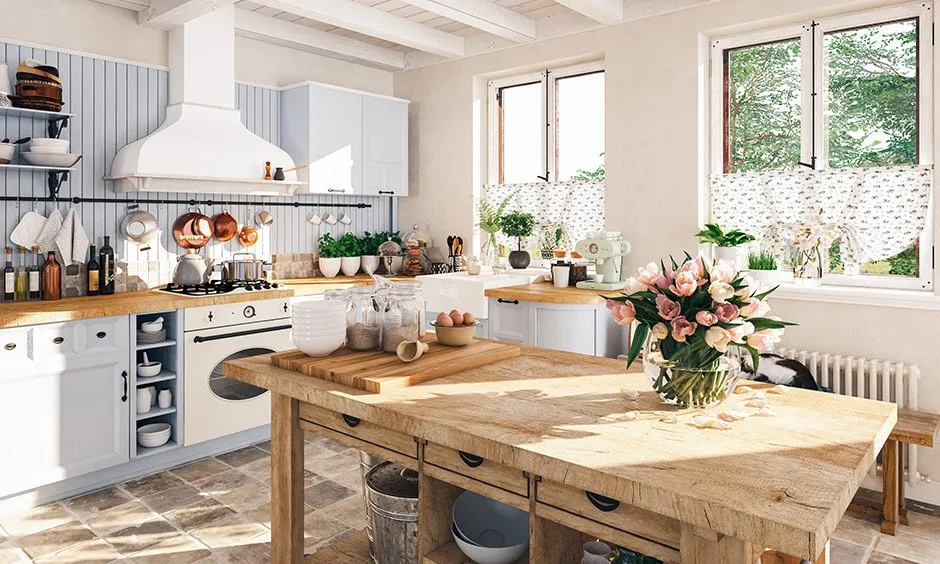
Lighting is crucial for both functionality and ambiance. Combine ambient (general), task (focused), and accent lighting to create a well-lit and inviting kitchen. Install recessed lights, pendant lights over the island, and under-cabinet lighting to illuminate work areas and highlight design features. The style of your lighting fixtures should complement your overall design. Consider the color temperature of your lights to create the desired atmosphere. Warm white lights create a cozy environment, while cool white lights are ideal for tasks and modern aesthetics.
Decorative Elements
Decorative elements such as artwork, plants, and open shelving decor add personality and visual interest to your kitchen. Select artwork that complements your style, and consider adding a gallery wall. Incorporate plants to bring life and freshness to the space. Style open shelves with dishware, cookbooks, and decorative objects that reflect your personal taste. Choose accessories that add color, texture, and a touch of your unique personality to the heart of your home. Remember that less is often more; avoid clutter and curate your decorative items carefully.
Window Treatments
Window treatments provide both functionality and aesthetic appeal. Consider the amount of natural light you want and the level of privacy needed. Options include curtains, blinds, shades, or shutters. Choose materials and styles that coordinate with your overall design. For example, light and airy curtains can enhance a coastal kitchen, while sleek blinds suit a modern aesthetic. Selecting the proper window treatments will enhance the beauty and functionality of your kitchen.
Maintaining Your Kitchen Decor
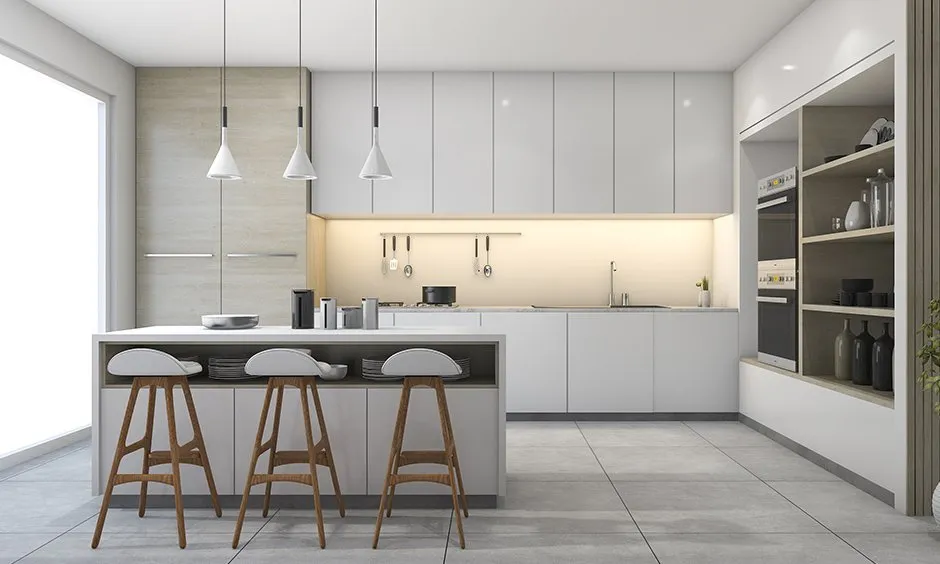
Once your kitchen decor is in place, maintaining it will ensure its longevity and beauty. Regularly clean surfaces, including countertops, cabinets, and appliances. Address spills and messes promptly to prevent stains and damage. Dust accessories and decorative items regularly. Periodically inspect hardware and fixtures for wear and tear and make necessary repairs. By following a regular maintenance routine, you can enjoy your beautifully designed kitchen for years to come.
In conclusion, designing your kitchen decor involves several key steps: choosing your preferred style, planning the layout, selecting colors and materials, and adding accessories and finishing touches. By carefully considering these elements, you can create a functional and beautiful kitchen that reflects your personality and enhances your lifestyle. Remember to focus on these five easy steps to achieve kitchen perfection.
